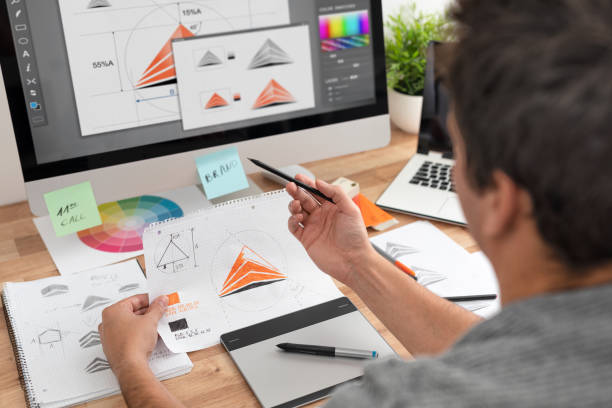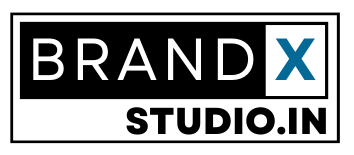
In the dynamic world of business and branding, a logo stands as a visual ambassador, a symbolic representation of an organization’s identity. The significance of a well-crafted logo cannot be overstated, as it serves as the face of a brand, conveying its values, ethos, and personality to the audience. Logo design is a multidimensional field, encompassing various styles and approaches. This essay aims to delve into the diverse landscape of logo design, exploring different types, their characteristics, and the impact they have on brand perception.
Here are the main six types of logo design used in graphic design-
1. Wordmarks and Letter marks
Wordmarks and letter marks are types of logos that focus primarily on typography to convey the brand name. It consist of the full name of the brand, stylized in a unique and visually appealing manner. A classic example is the Coca-Cola logo, where the distinctive script font has become synonymous with the brand. On the other hand, letter marks, also known as monograms, use the initials of the brand to create a visually appealing design. IBM is a prominent example, with its simple yet powerful letter mark. These types of logos are effective in promoting brand recognition through the strategic use of typography.
2. Pictorial Logos
Pictorial logos, also known as logo symbols or brand marks, rely on visual symbols to represent the brand. These symbols are often abstract or literal representations of the company’s identity. The Nike swoosh and the Apple logo are iconic examples of pictorial logos that have become ingrained in popular culture. Pictorial logos can be versatile and memorable, as they create a visual association with the brand. However, designing an effective pictorial logo requires a careful balance between simplicity and communicative power.
3. Abstract Logos
Abstract logos are characterized by non-representational shapes and forms that do not directly depict the product or service offered by the brand. These logos rely on creative and unique design elements to convey the brand’s essence. The Pepsi logo, with its multicolored, dynamic circular design, is a prime example of an abstract logo. Abstract logos offer a high level of creativity and flexibility, allowing for a wide range of interpretations. They are particularly useful when a brand wants to convey a sense of innovation, modernity, or uniqueness without being tied to a specific product or service.
4. Mascot Logos
Mascot logos involve the creation of a character or figure to represent the brand. These characters are often anthropomorphic animals, people, or fantasy creatures. Mascot logos add a human or relatable touch to the brand, making it more approachable and friendly. The Michelin Man and the KFC Colonel are examples of mascot logos that have become iconic over the years. Mascot logos are particularly effective in industries where a personable and friendly image is desirable, such as the food and beverage industry or sports teams. They create a connection with the audience on an emotional level.
5. Combination Logos
Combination logos, as the name suggests, combine elements of both wordmarks and symbols. These logos integrate text and a visual element to create a comprehensive brand representation. The Burger King logo, with its stylized text and accompanying burger icon, is a well-known example of a combination logo. Combination logos offer the best of both worlds, providing the textual clarity of wordmarks and the visual appeal of symbols. They are versatile and can adapt to various marketing materials and platforms.
6. Emblem Logos
Emblem logos encapsulate the brand name and symbol within a unified shape, often resembling a badge or a crest. These logos exude a sense of tradition, authority, and prestige. The Harley-Davidson logo, featuring a shield-like emblem with a bar-and-shield design, is a quintessential example of this style.Emblem logos are commonly associated with heritage brands or those with a strong sense of tradition. They are frequently employed by organizations in the automotive, sports, and education sectors.
Overview of Logo Design
In the ever-evolving landscape of logo design, the diversity of styles and approaches reflects the creativity and innovation within the field. Each type of logo serves a unique purpose, catering to the specific needs and goals of the brand it represents. Whether through the simplicity of wordmarks, the creativity of abstract logos, or the personable touch of mascot logos, designers continuously explore new avenues to create memorable and effective brand identities.
As technology and design trends evolve, logo design will continue to adapt and transform, influencing how brands connect with their audiences. The ability of a logo to transcend language and cultural barriers, leaving a lasting impression, highlights its crucial role in the visual storytelling of a brand. In the end, the power of a logo lies not just in its visual appeal but in its ability to encapsulate the essence of a brand and forge a lasting connection with its audience.
We are BrandxStudio Join us on a journey to unlock the full potential of your brand. Let’s build, innovate, and captivate together. Discover the difference with BrandxStudio.

